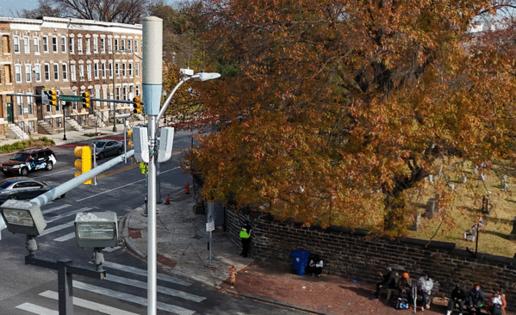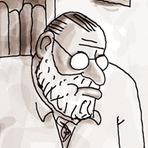Baltimore County measuring crime trends to evaluate 'Shotspotter' gunshot detection pilot
Published in News & Features
BALTIMORE — Baltimore County statisticians plan on comparing Essex to Dundalk and Lansdowne to Towson to determine if a controversial gunshot detection system and other new policing technologies are successfully bringing down criminal activity.
County officials are required to submit their final analysis to the federal government because the pilot surveillance projects, implemented in the Wilkens and Essex police precinct areas, are funded by the American Rescue Plan Act. The performance review is underway as some cities criticize or break away from ShotSpotter, a policing technology that uses acoustic sensors to alert police to gunfire, due to concerns about its effectiveness.
Baltimore County Police believe the system, implemented last year, “has proven to be a viable tool in identifying specific areas where gunshots are fired,” police spokesperson Joy Stewart said. The $738,000 two-year contract is set to end in August 2025, she said, noting the department has not yet made a final decision on continuing or expanding the program.
Less than a sixth of the hundreds of ShotSpotter alerts that police have received from the Essex and Wilkens precincts since last October have led police to actual crime scenes, according to data provided by the department. Of the 68 “verified” firearm crimes detected by ShotSpotter in the pilot areas, more than half were not reported to police by 911 calls. Shell casings were found at the scene of 56 of those scenes, leading to 10 arrests.
That’s roughly on par with ShotSpotter’s performance last year in Baltimore City, which signed off on a new $2.1 million three-year contract to continue using the technology. About a sixth of the city’s 2,473 ShotSpotter alerts in 2023 resulted in police opening a shooting, homicide or discharging case.
Baltimore Police spokesperson Lindsey Eldridge said the technology has improved response times, provides “valuable data” and allowed officers to provide “necessary aid and get quick medical care to victims in order to save lives” since the department started using it in 2018.
Last week, police were first tipped off to a shooting near the National Academy Foundation that wounded a Dunbar High School student due to a ShotSpotter alert, though a 911 caller also reported the shooting within two minutes, according to dispatch records.
The system has proven useful in notifying police of shooting events “that they otherwise would not be notified of” and decreasing response times to those events, said Daniel Lawrence, a criminal justice researcher with the analysis nonprofit CNA Corporation.
Lawrence and his colleague Kenneth Novak, another researcher with CNA’s Center for Justice Research and Innovation, recently published a study analyzing the impacts of gunshot detection technology. Following data from three different cities, they found technologies like ShotSpotter doubled alerts to shooting incidents. But implementation of the acoustic sensor system did not significantly reduce crime metrics and clearance rates, the main data points police departments tend to look at, he said.
Critics are not convinced the technology is worth its high cost, or what they see as its potential to over-police communities of color.
Chicago ended its contract with SoundThinking, the company that sells ShotSpotter and other technologies, this year, and an audit by New York City’s comptroller found the technology wasted thousands of officer hours on unconfirmed reports.
ShotSpotter “has been shown to really improve the accuracy of notifications of shooting events” and nearly doubles the number of alerts regarding gun discharges, Lawrence said. But the higher rates of alerts also means a “fairly dramatic increase” in the amount of time that officers are responding to those events overall.
Though the locations of the technology’s acoustic centers are secret, the technology magazine WIRED published leaked coordinates of the microphones this February. In Baltimore, the microphones appeared to be largely placed in the city’s so-called Black Butterfly of communities east and west of downtown.
SoundThinking has responded to the criticism by noting that over 80% of gunfire goes unreported to 911, and that unconfirmed alerts don’t necessarily mean there was no discharge taking place.
“ShotSpotter is proven to be an effective, cost-efficient, empirically grounded, scientifically sound way to help law enforcement in its work,” the company said in a response to the New York City comptroller’s report.
Baltimore City’s 911 call data indicates that there were nearly 1,300 ShotSpotter alerts so far this year in the city as of Sunday. More than 80% of them were in the city’s Western, Eastern, or Southwest police districts.
Baltimore County’s analysis of crime in the two southern precincts is expected to continue into next year, according to an annual report from the county on the status of its ARPA-funded projects.
It will be used to evaluate ShotSpotter as well as “Portable Observation Devices” and Automated License Plate Reader systems. County officials have so far spent almost $1.3 million in ARPA funds on the three technologies deployed in the pilot areas, according to the July spending report.
The Wilkens precinct will be compared to Towson because the county seat is the most similar demographically and with respect to trends in violence and weapon law violations, according to the county’s report. Dundalk, though less similar to Essex demographically, was chosen because crime trends from January 2021 to present have remained mostly in line between the areas.
_____
©2024 The Baltimore Sun. Visit at baltimoresun.com. Distributed by Tribune Content Agency, LLC.







Comments